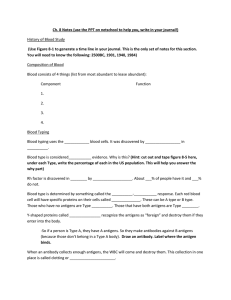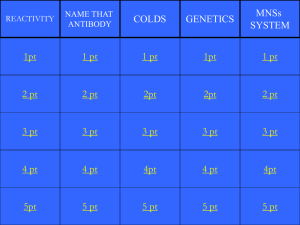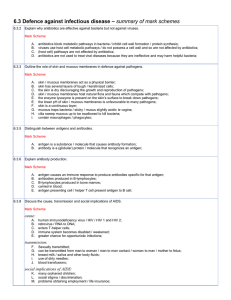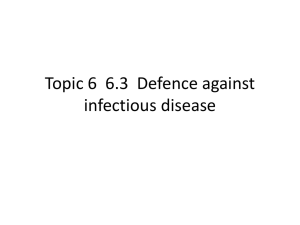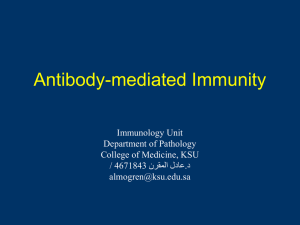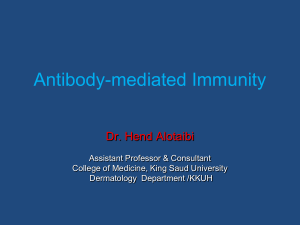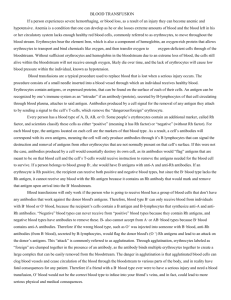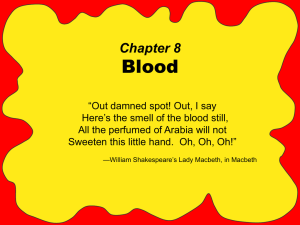Hong, Haruka, Soo Wan Antibiotics against bacteria and viruses
advertisement
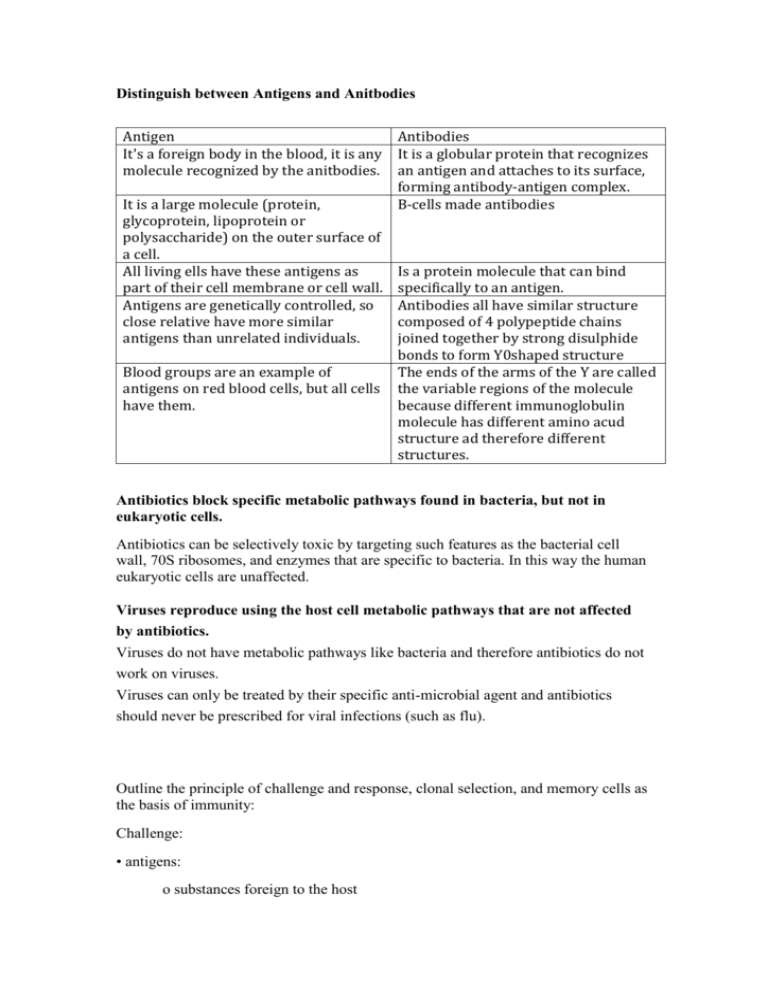
Distinguish between Antigens and Anitbodies Antigen It's a foreign body in the blood, it is any molecule recognized by the anitbodies. It is a large molecule (protein, glycoprotein, lipoprotein or polysaccharide) on the outer surface of a cell. All living ells have these antigens as part of their cell membrane or cell wall. Antigens are genetically controlled, so close relative have more similar antigens than unrelated individuals. Blood groups are an example of antigens on red blood cells, but all cells have them. Antibodies It is a globular protein that recognizes an antigen and attaches to its surface, forming antibody-antigen complex. B-cells made antibodies Is a protein molecule that can bind specifically to an antigen. Antibodies all have similar structure composed of 4 polypeptide chains joined together by strong disulphide bonds to form Y0shaped structure The ends of the arms of the Y are called the variable regions of the molecule because different immunoglobulin molecule has different amino acud structure ad therefore different structures. Antibiotics block specific metabolic pathways found in bacteria, but not in eukaryotic cells. Antibiotics can be selectively toxic by targeting such features as the bacterial cell wall, 70S ribosomes, and enzymes that are specific to bacteria. In this way the human eukaryotic cells are unaffected. Viruses reproduce using the host cell metabolic pathways that are not affected by antibiotics. Viruses do not have metabolic pathways like bacteria and therefore antibiotics do not work on viruses. Viruses can only be treated by their specific anti-microbial agent and antibiotics should never be prescribed for viral infections (such as flu). Outline the principle of challenge and response, clonal selection, and memory cells as the basis of immunity: Challenge: • antigens: o substances foreign to the host o which stimulate antibody production by B lymphocytes Response: • antibodies: o immunoglobulins § produced during protein synthesis § by B-lymphocytes o great variety of different B lymphocytes § about 10 to the 15th power § each producing its own unique antibody, specific to just one type of antigen • process of immunity called challenge and response o because immunity to a disease is only produced after exposure o to the specific antigens associated with the disease Clonal Selection: • initial encounter with an antigen o produces a primary challenge and response o including a lag time for clonal selection o to mitotically produce many daughter lymphocytes • B-lymphocyte proliferation o by mitotic cloning of selected B-lymphocytes § selection by match of antibody to antigen § just one (= clonal selection) § or a few (=polyclonal selection) • antibody production o B-lymphocytes produce >1000 antibodies/second/B-lymphocyte o each specific to the invading antigen Memory Cells: • initial exposure o each clone of B-lymphocytes § includes immediately active, antibody-producing plasma cells § as well as dormant, memory cells • subsequent exposure o stimulates memory cells to produce a secondary response o because of the elevated number of memory cells o secondary response is much faster and stronger than the primary response http://www.slic2.wsu.edu:82/hurlbert/micro101/images/immcs2.gif Burrell, John. "Click4Biology: 6.3 Defence against Infectious Disease." Click4Biology. Web. 18 Sept. 2011. <http://click4biology.info/c4b/6/hum6.3.htm>.
